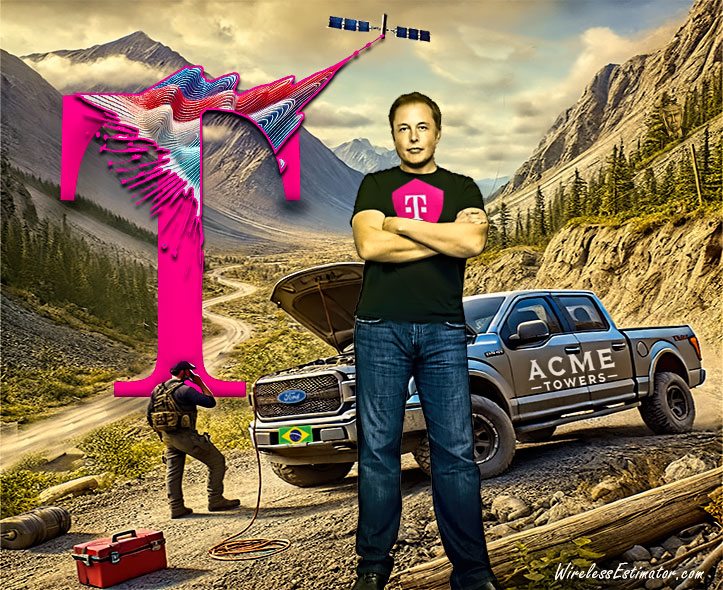
Tower crews working in remote areas often find that they are without cell service for emergencies. If they are a T-Mobile subscriber, they’ll be able to use Starlink to reach first responders and other services. It has not been disclosed if the service will be free to all T-Mobile plans.
Elon Musk’s Starlink and T-Mobile have partnered to expand mobile coverage by using Starlink’s low-Earth orbit (LEO) satellites. This collaboration aims to eliminate dead zones in remote areas, providing connectivity even where traditional cell towers don’t reach. The service is intended to extend T-Mobile’s network coverage to rural and isolated locations by enabling compatible T-Mobile devices to connect to Starlink satellites.
Starlink uses a constellation of LEO satellites to provide global internet coverage. These satellites can transmit signals directly to mobile devices, bypassing the need for terrestrial infrastructure.
“Starlink direct to mobile phone Internet is exclusively with T-Mobile in the US for the first year, then other carriers thereafter,” Musk wrote on X. “We are starting off working with one carrier in each country, but ultimately hope to serve all carriers.”
SpaceX could expand cellular Starlink access to AT&T and Verizon if the carriers partner with the company. So far, those two rival carriers are backing a rival startup in Texas, AST SpaceMobile, preparing to use orbiting satellites to beam high-speed internet to phones on the ground.
T-Mobile will use its mid-band spectrum (likely 5G) to connect devices with Starlink’s satellites. Compatible phones can access the network without needing any new hardware.
Unlike traditional satellite phones, this service is designed to work with ordinary smartphones that T-Mobile customers already have.
While the service is marketed for broad use, it’s particularly valuable in emergencies, such as natural disasters, or when in remote areas without conventional mobile coverage. Both companies emphasize this as one of the primary use cases.
While the initial focus is on emergency use in remote areas, the partnership aims to create a more extensive network that could eventually handle everyday communications in under-served locations.
The T-Mobile and Starlink service is not expected to be entirely free, but details about pricing have not been fully disclosed. T-Mobile and SpaceX have indicated that the service will be included in some of T-Mobile’s higher-tier plans without extra costs for basic features, like text messaging.
However, more advanced services, such as voice calls and data, could potentially be offered as premium add-ons or might be included in specific plans.
In their original announcement, T-Mobile CEO Mike Sievert hinted that the service would be included in most plans at no additional cost, but he did not provide specific pricing details for advanced features like full internet connectivity.
Two years ago, Apple unveiled its new iPhone 14, promoting an emergency service via satellite feature that enables the phones to connect and send messages when the devices are in areas with no cell phone coverage.
Their phones, including the new iPhone 15, connect to Globalstar’s satellites through its 2.4GHz S-band spectrum.















